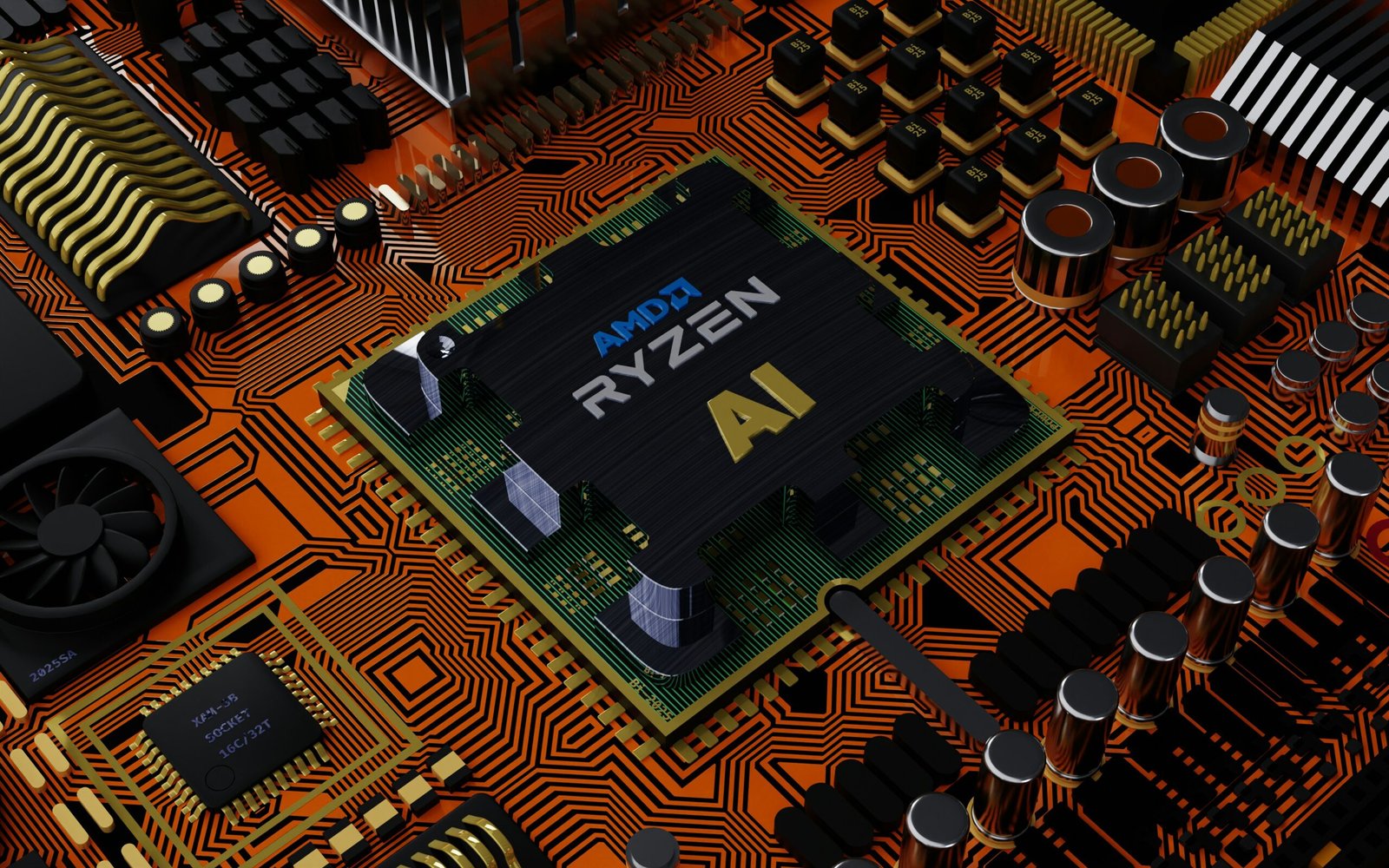Beyond Bitcoin: Discover the Top 5 Cryptocurrencies Shaping the Future
 Photo by Mariia Shalabaieva on Unsplash
Photo by Mariia Shalabaieva on Unsplash The cryptocurrency market has evolved significantly since the introduction of Bitcoin, which laid the foundation for decentralized digital finance. While Bitcoin continues to be a major player in the market, the landscape has expanded to include a diverse array of digital assets that offer unique capabilities and purposes. This dynamic market is no longer defined solely by Bitcoin’s vision but has grown into a comprehensive ecosystem that incorporates various technologies, financial products, and regulatory frameworks.
The initial concept of decentralized finance, or DeFi, has matured into a sophisticated sector featuring an array of cryptocurrencies that leverage blockchain technology to provide innovative solutions for a myriad of financial and technological challenges. These digital assets have introduced advancements in areas such as smart contracts, scalability, interoperability, privacy, and energy efficiency, which are essential for the next generation of financial systems and technologies.
Today’s cryptocurrency market is characterized by rapid innovation and a competitive environment where newer coins and tokens continually emerge, each aiming to address specific limitations or introduce novel functionalities. This progression underscores the significance of understanding the new key players who are driving change in this evolving ecosystem. Cryptocurrencies such as Ethereum, Binance Coin, Cardano, Solana, and Polkadot have distinct contributions to the market, each bringing its own set of features and use cases that push the boundaries of what’s possible in digital finance and beyond.
As we explore the rising importance of these top cryptocurrencies, it becomes crucial to stay informed about these developments to grasp the broader implications for technology and finance. Recognizing the impact of these diverse digital assets can provide insights into future trends and opportunities within the cryptocurrency realm, as these key players collectively shape the future of decentralized financial systems and digital asset innovation.
Ethereum: The Pioneer of Smart Contracts
Ethereum stands at the forefront of the cryptocurrency world as a pioneering platform for decentralized applications (dApps) and smart contracts. Launched in 2015 by programmer Vitalik Buterin, Ethereum introduced a programmable feature to the blockchain landscape, allowing developers to create and deploy autonomous, self-executing contracts that significantly extend cryptocurrency use beyond simple value transfers.
At its core, Ethereum’s blockchain is built to support an intricate system of decentralized computation known as the Ethereum Virtual Machine (EVM). This revolutionary technology provides a robust environment for developers, offering the tools to create dApps that operate on a peer-to-peer network. These applications execute code exactly as they are programmed without any possibility of fraud, censorship, or third-party interference.
One of the most notable advancements in Ethereum’s roadmap is the transition to Ethereum 2.0. This upgrade aims to enhance the platform’s scalability, security, and sustainability, addressing some of the critical limitations of the current Ethereum protocol. Ethereum 2.0 will implement a proof-of-stake consensus mechanism, which is expected to reduce energy consumption by approximately 99.95% compared to the existing proof-of-work mechanism, fostering a more eco-friendly approach to blockchain operations.
The applications of Ethereum’s smart contracts are far-reaching and transformative across various industries. In the finance sector, decentralized finance (DeFi) projects leverage Ethereum to offer services such as lending, borrowing, and trading, all without intermediaries. The gaming industry utilizes Ethereum to create unique in-game assets with real ownership and value, enhancing player experiences and economies. Additionally, supply chain management systems benefit from Ethereum’s transparent and tamper-proof ledger, ensuring accountability and traceability for goods and materials.
Ethereum has undeniably catalyzed significant advancements in blockchain technology, laying the groundwork for a decentralized future. Its programmable, versatile, and continually evolving nature reinforces its position as a cornerstone in the burgeoning ecosystem of cryptocurrencies and decentralized applications.
Ripple (XRP): The Future of Cross-Border Payments
Ripple (XRP) takes a pioneering approach to streamline cross-border payments, fundamentally rethinking how international money transfers operate. Unlike traditional banking methods that involve multiple intermediaries, Ripple uses its native cryptocurrency, XRP, alongside RippleNet and the XRP Ledger to facilitate quicker and cost-effective transactions. Due to this innovative model, Ripple significantly reduces the time and expenses associated with cross-border transfers, which often take days and come with hefty fees in the conventional banking system.
RippleNet, Ripple’s enterprise software solution, is a decentralized network that leverages blockchain technology to offer unmatched real-time payment settlement. This platform connects banks, payment providers, and digital asset exchanges, enabling seamless transactions using a common set of rules and standards. Complementing this, the XRP Ledger serves as an open-source, decentralized ledger that processes thousands of transactions per second. Together, RippleNet and the XRP Ledger offer an interoperable, scalable, and sustainable solution for global payment systems.
Various prestigious financial institutions have recognized the benefits of Ripple’s technology and incorporated it into their operations. For instance, Santander, American Express, and Standard Chartered have all adopted Ripple’s systems to enhance the speed and efficiency of their cross-border transactions. By leveraging the advantages of RippleNet, these organizations can offer their customers faster, lower-cost international payments, thereby gaining a competitive edge in the market.
Ripple’s potential to disrupt traditional banking is significant. By offering a more efficient alternative to SWIFT transfers, Ripple addresses existing pain points in the legacy financial systems. Moreover, Ripple’s commitment to compliance with regulatory standards further solidifies its position as a viable and sustainable option for financial institutions. As market demand for faster and more reliable payment solutions grows, Ripple continues to embody a promising model for the future of international transactions.
Cardano: The Proof of Stake Innovator
Cardano has carved a niche in the cryptocurrency landscape as a pioneering platform designed with a strong emphasis on scientific research and peer-reviewed academic principles. Unlike many of its contemporaries, Cardano employs a Proof of Stake (PoS) consensus mechanism, which is both energy-efficient and theoretically more secure than the Proof of Work (PoW) systems like that of Bitcoin. The PoS mechanism necessitates that validators—referred to as “stakeholders”—hold a significant amount of the cryptocurrency, which aligns their incentives with the network’s overall health and security.
One of the most compelling features of Cardano is its dual-layer architecture. This architecture consists of the Cardano Settlement Layer (CSL) and the Cardano Computation Layer (CCL). The CSL handles the cryptocurrency transactions, ensuring swift and secure transfers. Meanwhile, the CCL is dedicated to the execution of smart contracts and the development of decentralized applications (dApps). This architectural separation ensures that multiple functionalities can operate without interference, enhancing both the speed and flexibility of the network.
Cardano’s development is meticulously planned, with a transparent and comprehensive roadmap that guides its evolution. The project is being executed in phases named after influential historical figures, starting with ‘Byron’ for foundation and moving towards ‘Shelley’ for decentralization, and ultimately aiming for ‘Voltaire’ which focuses on governance. Through each phase, Cardano aims to enhance its protocols and introduce innovations that make the platform more scalable, secure, and user-friendly.
Looking ahead, Cardano envisions a future where it serves as the backbone for a wide range of applications that extend far beyond financial transactions. The ongoing updates and community collaborations underscore its commitment to creating a robust and scalable ecosystem, capable of fostering true innovation in the dApp space. As Cardano continues to evolve, it aims to become a key player in the blockchain economy, providing the world with a more secure and efficient platform for all types of decentralized technologies.
Polkadot: Enabling Interoperability Between Blockchains
Polkadot is a forward-thinking blockchain project with a mission centered around achieving seamless interoperability between disparate blockchains. This ambitious framework, conceptualized by Dr. Gavin Wood, co-founder of Ethereum, addresses the challenge of disjointed blockchain ecosystems that traditionally operate in isolation. By creating a cohesive network where multiple blockchains can interact and share information, Polkadot aims to foster greater collaboration and innovation within the decentralized space.
At the core of Polkadot’s interoperability solution lies the concept of parachains. These parallel chains are run alongside the main Polkadot Relay Chain, allowing for specialized services, flexibility, and scalability. Each parachain enjoys its own unique characteristics while maintaining the capability to communicate and transfer information among other parachains and the central relay chain. This interconnectedness is vital for enabling diverse blockchain applications to complement each other, enhancing the overall functionality and user experience within the network.
Polkadot’s Substrate framework is another pivotal component that facilitates the creation and customization of these parachains. Substrate streamlines the often complex and resource-intensive process of developing blockchain protocols by providing a versatile toolkit. Developers can now build customized blockchains tailored to specific needs without having to start from scratch. This flexibility not only accelerates development but also empowers a broader range of decentralized projects to emerge, increasing the overall dynamism and adaptability of the Polkadot ecosystem.
The implications of Polkadot’s pursuit of interoperability are significant. By breaking down the walls between disparate blockchains, Polkadot fosters a more holistic and integrated decentralized environment. This integration is crucial for the maturation and expansion of the blockchain industry, enabling more comprehensive and synergistic solutions that can drive innovation and efficiency across various sectors.
Solana: High-Speed Blockchain for Decentralized Applications
Solana is positioned as a transformative force in the cryptocurrency landscape, primarily due to its emphasis on high-speed transactions and scalability. Central to Solana’s innovation is its unique Proof of History (PoH) consensus mechanism, which differentiates it from traditional blockchain protocols. By functioning as a cryptographic clock, PoH significantly enhances transaction processing speeds, ensuring the network can support thousands of transactions per second. This feature positions Solana as one of the most efficient blockchain platforms currently available.
The scalability of Solana is further exemplified by its impressive throughput capabilities. While many blockchain networks struggle to maintain performance under increased load, Solana’s architecture enables it to handle substantial transaction volumes without compromising speed or security. This is achieved through a combination of PoH and other groundbreaking technologies such as Tower BFT (Byzantine Fault Tolerance), Turbine (a block propagation protocol), and Gulf Stream (a mempool-less transaction forwarding protocol). Together, these innovations facilitate rapid data processing, which is essential for the demands of modern decentralized applications (dApps).
The expanding Solana ecosystem is a testament to its robust infrastructure and developer-friendly environment. A growing number of dApps and DeFi projects are opting to build on Solana’s platform, attracted by its high transaction throughput and minimized latency. Notable projects within the ecosystem include Serum, a decentralized exchange, and Raydium, an automated market maker (AMM) and liquidity provider. The increasing deployment of these applications underscores Solana’s capability to support a broad spectrum of decentralized financial services, gaming, and non-fungible tokens (NFTs).
Due to its state-of-the-art technological advancements and an ever-expanding suite of applications, Solana is shaping the future of blockchain-based solutions. Its focus on scalability and speed not only sets a high benchmark for other cryptocurrencies but also paves the way for innovative use-cases in the decentralized web.
Potential Risks and Challenges in the Crypto Space
The dynamic world of cryptocurrencies is not without its fair share of risks and challenges. Investors should be aware of regulatory challenges, security vulnerabilities, and market volatility inherent to this burgeoning asset class. As the popularity of digital currencies such as Ethereum, Ripple, Litecoin, Cardano, and Polkadot continues to surge, so does the scrutiny from governmental and financial regulatory bodies. Regulatory frameworks around cryptocurrencies are evolving globally, with some nations enacting stringent regulations while others adopt a more laissez-faire approach. Staying abreast of these regulations is paramount given their potential to significantly impact the value and accessibility of various cryptocurrencies.
Security vulnerabilities constitute another substantial risk in the crypto space. Instances of hacking, fraud, and breaches are not uncommon, with some high-profile security lapses resulting in immense financial losses. For instance, the notorious Mt. Gox hack in 2014 and the more recent Coincheck hack in 2018 underscore the importance of robust security measures. These incidents have spurred increased investment in blockchain security technologies and led to the development of more secure trading platforms. Nonetheless, investors are encouraged to adopt safe practices such as utilizing hardware wallets and enabling two-factor authentication to mitigate these risks.
Market volatility is an intrinsic characteristic of the cryptocurrency sphere. The values of digital currencies can swing dramatically within short periods, often driven by speculative trading, economic news, or geopolitical events. This volatility can result in significant gains but also substantial losses. For example, the meteoric rise and subsequent fall of Bitcoin’s price from late 2017 to early 2018 highlighted the unpredictable nature of crypto markets. Such volatility necessitates performing due diligence before investing, understanding one’s risk tolerance, and, when possible, diversifying investments to mitigate potential losses.
Undoubtedly, the crypto landscape remains fraught with challenges. However, ongoing technological advancements, an increasingly sophisticated regulatory environment, and heightened awareness of security issues continue to address these risks. Investors must remain vigilant, continually educate themselves on emerging trends, and rigorously analyze the market to navigate the future of cryptocurrencies effectively.
Conclusion: The Future of Cryptocurrencies Beyond Bitcoin
The landscape of digital finance has been profoundly impacted by Bitcoin, but it is becoming increasingly clear that the horizon of cryptocurrency extends far beyond it. In this blog post, we delved into the top five cryptocurrencies that are pioneering these developments, each with their unique technological advancements and practical applications. Ethereum continues to dominate with its smart contracts and decentralized applications, revolutionizing how transactions and agreements are executed on the blockchain. Ripple remains a cornerstone for cross-border payments with its efficient, low-cost transaction network.
Meanwhile, Litecoin offers a more versatile alternative to Bitcoin with its faster transaction times and improved storage efficiency. Cardano represents the forefront of scientific research in blockchain technology, bringing a meticulous academic approach to addressing scalability and regulatory concerns. Lastly, Polkadot’s innovative multi-chain framework promises to enhance interoperability between distinct blockchain ecosystems, paving the way for a more interconnected decentralized web.
While Bitcoin will always be a significant figure in the cryptocurrency sphere, these emerging digital currencies are proving to be indispensable to the evolution of the financial ecosystem. They are pushing the boundaries of what is possible with blockchain technology and decentralized systems, fostering a more inclusive, efficient, and secure financial future. Hence, it is crucial for enthusiasts, investors, and technologists alike to keep abreast of these developments.
By exploring these innovative technologies and staying informed about their ongoing progress, stakeholders can more accurately foresee the trajectory of digital finance. Continuous education and active engagement in the crypto space are essential as we move into a future where decentralized systems may become a mainstay of global finance.




Tidak ada komentar